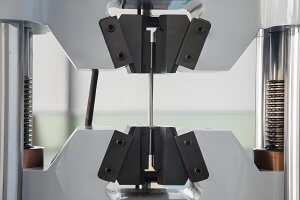In the world of manufacturing, two machines play pivotal roles: CNC lathes and CNC mills. These machines share the purpose of material removal using cutting tools, yet they possess unique characteristics that set them apart. In this article, we delve into the intricacies of CNC lathes and CNC mills, exploring their functions, operational methods, and the differences that define them.
CNC Mills & Lathes: Overview
At first glance, a lathe appears akin to a workbench, but its functions extend far beyond that. A CNC lathe is a powerful machine designed to rotate a workpiece on its axis while a cutting tool, typically equipped with a single blade, remains stationary. This rotational motion enables the cutting tool to shape the workpiece by removing material. CNC lathes are particularly adept at performing turning, facing, drilling, and threading operations. They are good at creating cylindrical or round-shaped workpieces, making them indispensable in various industries such as metalworking and woodworking.
On the other hand, a CNC mill utilizes rotating cutting tools to remove material from a stationary workpiece. The cutting tools used in milling machines often feature multiple blades or points, enabling them to grind away material from the workpiece in various directions and angles. CNC mills are highly versatile machines capable of performing a wide range of operations, including drilling, slotting, contouring, and pocketing. Their ability to create complex shapes and features makes them indispensable in industries such as automotive, aerospace, and precision engineering.
While both CNC lathes and CNC mills follow the machining principle of extracting material from a block and shaping it to produce a specified part, their operational methods differ significantly. The key distinction lies in the relationship between the workpiece and the cutting tool.
The Main Differences
One of the key differences between CNC lathes and CNC mills lies in the relationship between the workpiece and the tool during machining. In a lathe, the workpiece spins about its axis while the cutting tool remains stationary. This characteristic makes lathes the preferred choice when creating quick, repeatable, and symmetrical cylindrical parts. On the other hand, in a milling machine, the tool rotates about its axis while the workpiece remains stationary. This dynamic allows the milling machine to approach the workpiece from various orientations, making it suitable for intricate and complex parts. This distinction can be attributed to the number of axes each machine operates on. Typically, lathes operate on two axes, X and Z, while milling machines operate on three axes, X, Y, and Z, although some milling machines can even work with 4 or 5 axes, further expanding their capabilities.

Another significant difference between CNC lathes and CNC mills is the cutting tool configuration. Milling machines typically employ cutting tools with multiple blades or points, allowing them to effectively grind away material from the workpiece. In contrast, lathes utilize cutting tools with a single blade. This distinction in cutting tool design enables milling machines to achieve more complex and versatile machining operations, such as creating intricate shapes, contours, and 3D surfaces. On the other hand, lathes excel at producing cylindrical shapes and rotational features with precision, making them ideal for tasks that require symmetrical and rotational parts. The varying cutting tool configurations greatly impact the range of applications and machining capabilities of both CNC lathes and CNC mills.
Wrapping Up
CNC lathes and CNC mills are two distinct types of machines used in the manufacturing industry, each with its own unique functionalities and applications. To summarize the main differences between these machines:
- In lathes, the workpiece rotates while the cutting tool remains stationary, whereas in milling machines, the tool rotates while the workpiece remains stationary. This difference allows lathes to excel in creating symmetrical cylindrical parts, while milling machines offer greater flexibility for intricate and complex parts.
- Lathes typically operate on two axes (X and Z), while milling machines operate on three axes (X, Y, and Z), with some milling machines capable of working on 4 or 5 axes. The additional axes in milling machines enable them to approach the workpiece from multiple orientations, expanding their machining capabilities.
- Milling machines employ cutting tools with multiple blades or points, enabling them to grind away material and create complex shapes, contours, and 3D surfaces. In contrast, lathes use cutting tools with a single blade, making them highly precise for producing cylindrical and rotational features.
These fundamental differences contribute to the distinct strengths and applications of CNC lathes and CNC mills in the manufacturing industry. Understanding these disparities allows manufacturers to choose the most suitable machine for their specific machining needs, optimizing productivity and quality in their operations.
Other Articles You Might Enjoy
- 5 Key Differences between CNC Routers and CNC Mills
In the world of CNC machines, two popular contenders stand out: CNC routers and CNC mills. These advanced tools have revolutionized the manufacturing industry, enabling precise and automated production processes.…
- How Industry 4.0 Revolutionizes CNC Machining
The manufacturing industry is undergoing a profound transformation with the advent of Industry 4.0. This groundbreaking initiative, embraced by major companies and countries alike, leverages IT technologies to automate production…
- Discovering CNC Lathes: 10 Fascinating Features to Know
CNC lathes have revolutionized the manufacturing industry with their precision, efficiency, and remarkable capabilities. These machines are true marvels when it comes to crafting rotationally symmetric parts, such as cylindrical…






